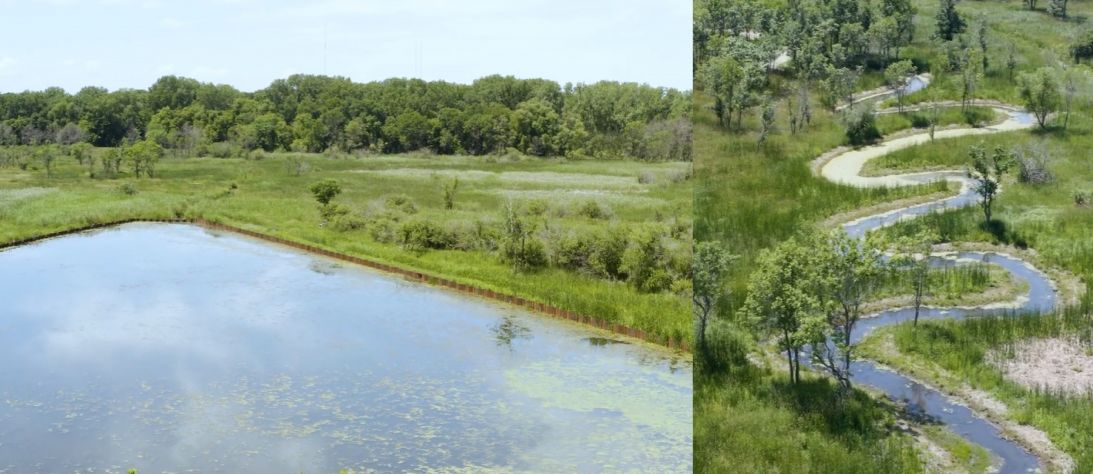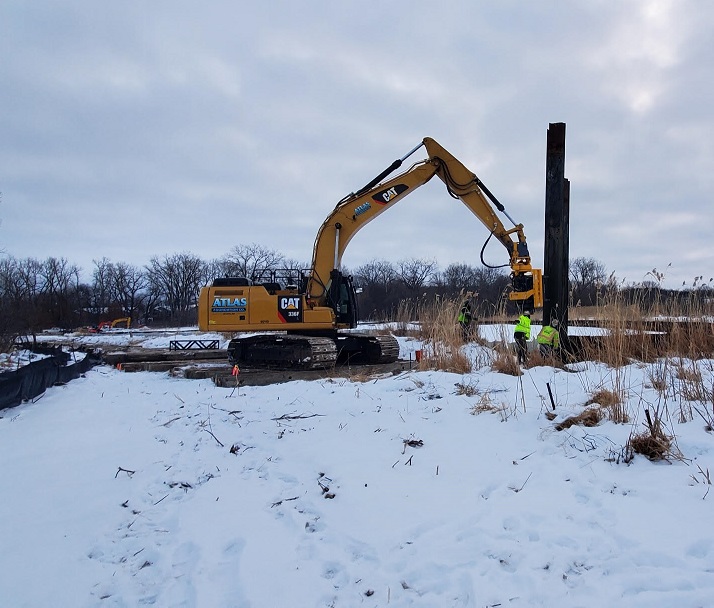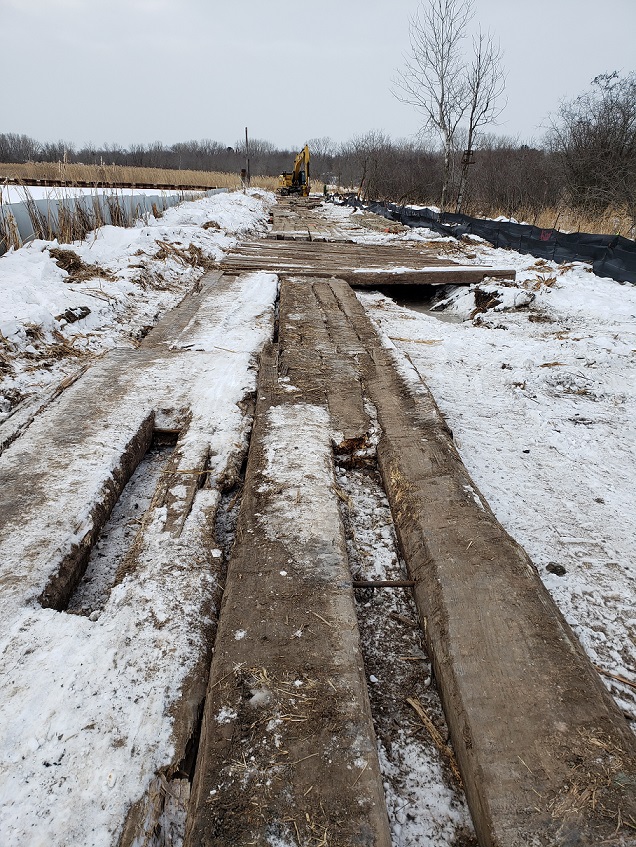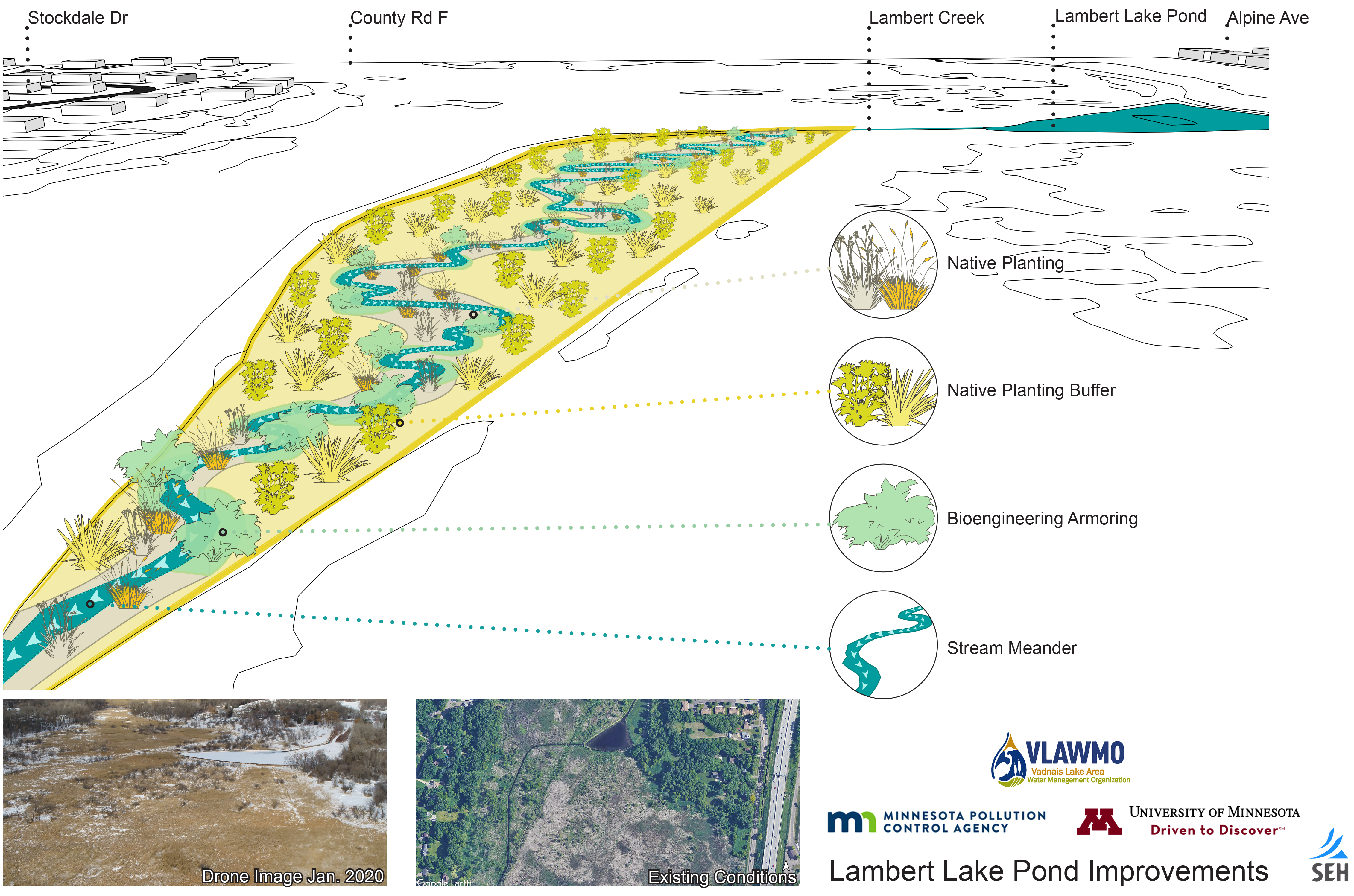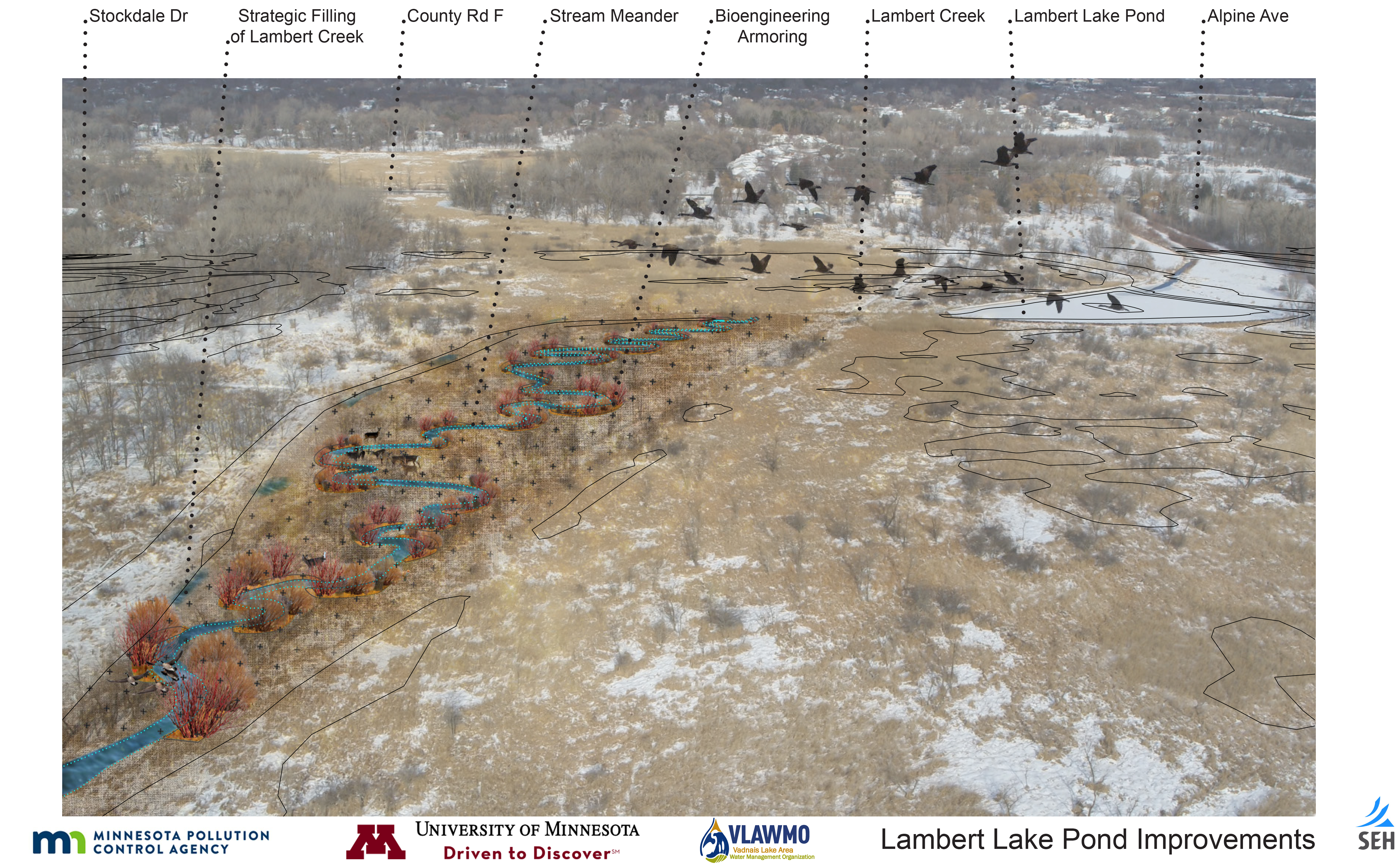March 25, 2020
VLAWMO and SEH are working with MN DNR on permitting for the project. MN DNR requests habitat-specific improvements for known species found in the watershed and especially for rare species. Rusty-patched bumble bees are endangered and have been documented in our area. To improve habitat for this species and other pollinators, we are looking at forbs (flowering plants) that we can add to the vegetation restoration phase of the meander to provide high-quality habitat. VLAWMO staff put together a list of species native to our area and shoreline/wetland areas that are also Rusty-patched bumble bee favorites. The list of favorites is available online from the U.S. Fish and Wildlife Service.
A few species we'll be featuring in the planting design include: Swamp milkweed, Joe pye weed, Fringed gentian, Jewel weed, Bog goldenrod, Buttonbush, and Wild black currant. Our list includes species that bloom throughout the growing season to provide consistent food resources for pollinators. We are also planning for species that are deer resistant so they will be likely to survive well in the Lambert Lake wetland. Shrubs including willows and dogwoods will also be used to help stabilize the meander.
The photo below shows a few of the native, wetland species that are especially valuable for Rusty-patched bumble bees and other pollinators. Those featured are: Buttonbush (white flowers), Fringed gentian (purple flowers), and Joe pye weed (pink flowers). Photos from Prairie Moon Nursery, a local nursery that VLAWMO often works with as a source of native seeds and plants.
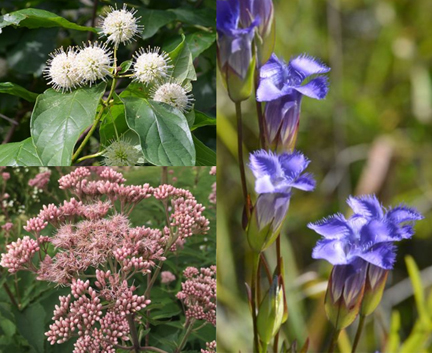
April 28, 2020
VLAWMO continues to work closely with SEH and MN DNR preparing the Environmental Assessment Worksheet (EAW). Our focus now is identifying the extent of mitigation that will be needed to protect Blanding’s turtles that may be in the area. Blanding’s turtles have not been reported at the project site. They have been reported in nearby wetlands. Guidance from MN DNR will provide the needed information to complete construction plans and determine optimal timing.
The COVID-19 situation makes many aspects of projects difficult. One of those areas is doing site visits and another is holding stakeholder meetings. MN DNR is unable to do site visits at this time, so we’re adapting by having VLAWMO staff photograph the ditch system and meet with MN DNR staff on Zoom to discuss current and future habitat conditions. A few photographs of the ditch-to-become-stream are included in this update.
Stakeholder meetings are another challenge. VLAWMO would prefer to hold in-person meetings and have an opportunity to talk with residents. We are unable to do that at this time, so we are holding an online forum on May 20, 6:00-7:00 pm - click here for more details and how to participate. VLAWMO, SEH, and the City of Vadnais Heights will provide information during this forum and respond to questions. We hope you will be able to attend. If you can’t make it during the forum, send questions and comments to office@vlawmo.org or by hardcopy mail (address below) by May 28th. We will be happy to respond.
VLAWMO maililng address:
800 East Co Rd E
Vadnais Heights, MN 55127
May 19, 2020
The Environmental Assessment Worksheet (EAW) has been submitted and published in the Environmental Quality Board (EQB) Monitor. It was published on May 18, 2020. The comment period runs from May 19, 2020-June 17, 2020. Feel welcome to contact us and have your comments included.
Contact: dawn.tanner@vlawmo.org
Click here for the EAW
Click here for the EQB Monitor published on May 18th, 2020
Our Lambert Pond and Creek Info Session will be held on May 20, 6:00-7:00 pm. VLAWMO, SEH, and theCity of Vadnais Heights will provide information during this forum and respond to questions. We hope you will be able to attend. If you can’t make it during the forum, send us your questions. We will be
happy to respond.
June 25, 2020
The Environmental Assessment Worksheet (EAW) process wrapped up this month. The comment period closed on June 17. The VLAWMO Board formally concluded the process by passing the Finding of Fact and Conclusions that identified no detrimental environmental impacts and no need for an Environmental Impact Statement (EIS) with Resolution 03-2020 on June 24. The Finding of Fact was submitted to the Environmental Quality Board (EQB) for publication in the EQB Monitor on July 7.
SEH is continuing to work on MN DNR and U.S. Army Corps of Engineers permitting. Permits are anticipated this summer so that VLAWMO will be able to go out for bid on the project as planned in August.
The University of Minnesota researchers are conducting lab experiments for biochar treatment cell development and preparing for summer pilot testing of prototype treatment cells.
July 17th, 2020
Floodplain Fridays
VLAWMO Education and Outreach has created a Floodplain Friday video series to foster dialogue and understanding on the role of floodplains in a watershed system. The series focuses on Lambert Creek and the new meander that will reconnect the stream to its floodplain, creating a healthier and more robust system. Check out the video series, and share it widely!
Part 1 Part 2
Biodiversity
As we conduct site visits and continue with planning for the project, we enjoy paying attention to the native species that we see there. We’ve started a bird list to document species at the site pre and post project. We hope to see more bird species using the site as habitat conditions improve. Check out our bird list and see if you’ve noticed these species in wetlands around you.
Project Status
SEH has completed work on the U.S. Army Corps of Engineers permit and is continuing to work on the MN DNR permit. Specs are in prep to allow VLAWMO to go out for bid on the project as planned in August.
The University of Minnesota researchers are wrapping up experiments for biochar treatment cell development and continuing preparations for summer pilot testing of prototype treatment cells.
August 18, 2020
FLOODPLAIN FRIDAYS
We are continuing to release Floodplain Friday videos. We invite you to check them out and share with others.
Part 1
Part 2
Part 3
BIODIVERSITY
Native vegetation has continued to recover at the site of previous construction and is especially showy right now. Forbs are abundant. See the photo included in this month’s update. Featured are Black-eyed susan (top left), False sunflower (also known as Smooth oxeye) and Bergamot (top right), Blue vervain (bottom left), and Marsh skullcap (bottom right). These flowers provide nectar and pollen for a wide range of pollinators, including the native bumble bee harvesting Goldenrod pollen shown here.
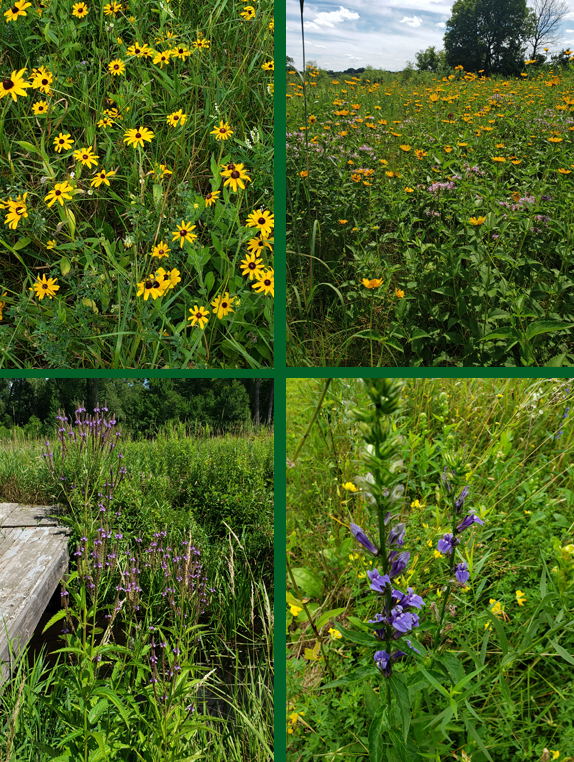
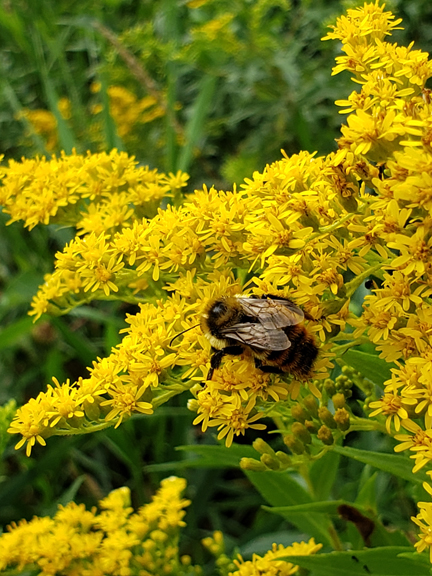
PROJECT STATUS
The MN DNR permit is in and completed. Specs have also been completed and will be presented to the VLAWMO Board on the August 26th Board meeting to allow staff and SEH to go out for bid on the project.
September, 2020
Specs and plans were authorized by the VLAWMO Board during the regular meeting, August 26, 2020. The project opened for bid on September 9, 2020. The project is being promoted on the VLAWMO, SEH, and City of Vadnais Heights websites. The ad is published in the League of Minnesota Cities Marketplace and Press Publications newspapers for the City of Vadnais Heights and White Bear Lake.
Sealed Bids will be received by the VLAWMO until 2:00 p.m. (local time), Thursday, October 1, 2020, via QuestCDN. The bid opening will be conducted via GoToMeeting, at which time they will be publicly opened and read aloud, GoTo Meeting information will be sent out to bidders closer to the Bid Opening time listed above.
Major components of the Work include:
- Remove 440 lineal feet of existing vinyl sheet pile
- Install 12,400 square yards of permanent steel sheet pile
- Excavate 1,645 cubic yards for stream meander
- Restore stream bank, including 330 deciduous shrubs, native seeding and erosion control
A mandatory pre-Bid meeting was held at 2:00 p.m. on Wednesday, September 23rd, 2020, at the project site. The City of Vadnais Heights’ Public Works Department prepared the site by mowing and trimming woody vegetation to allow large vehicles to access the site and to provide ample parking. Representatives of VLAWMO and the engineering team were present to discuss the Project. Bidders were required to attend and participate. The pre-Bid meeting was well attended by prospective contractors.
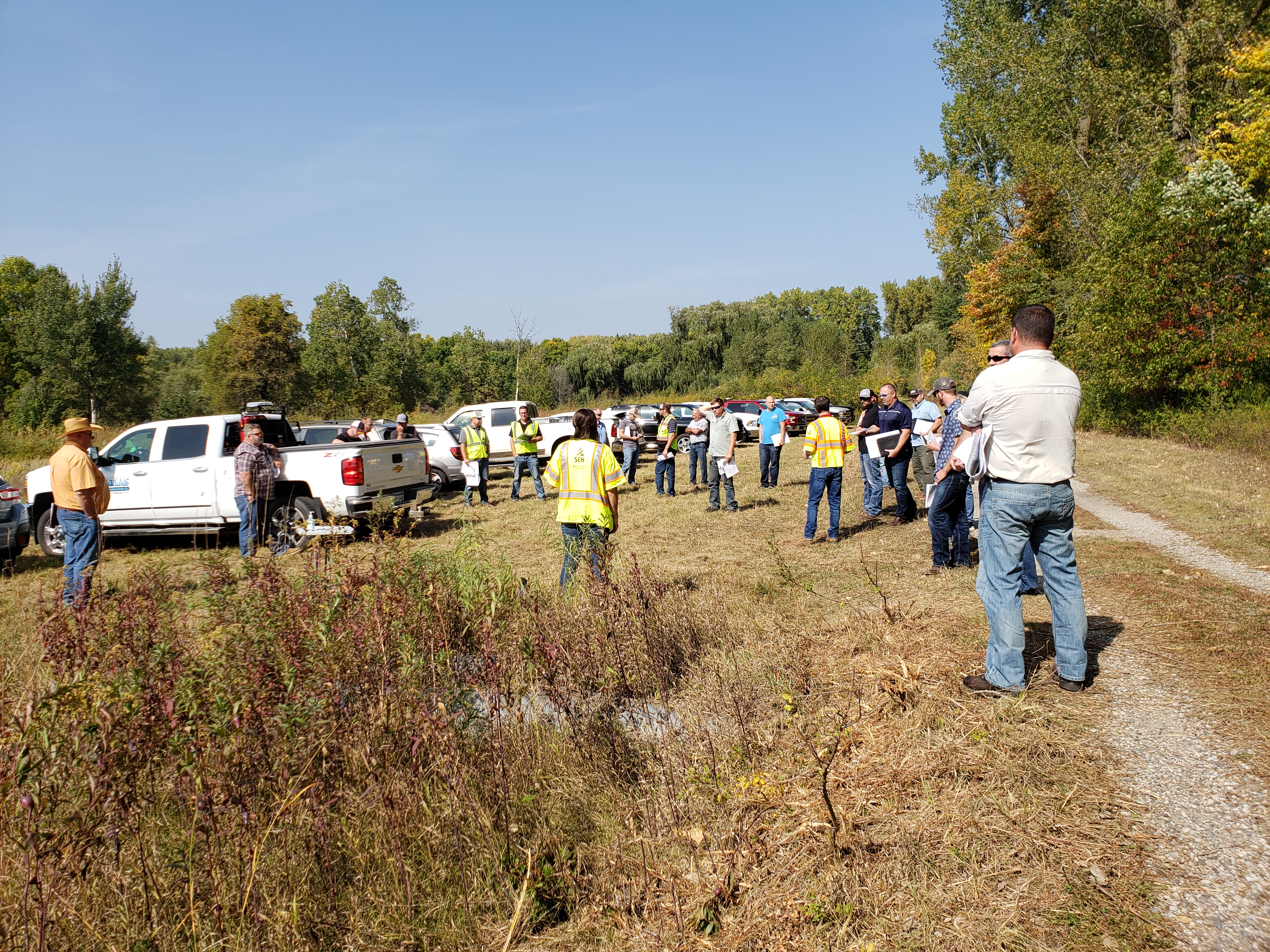
The University of Minnesota research team continues to work on biochar testing and design. A prototype is running at the site, and removals are being measured at the start of storm events when the first flush of bacteria is highest. Early results on the biochar development process will be presented at the upcoming Water Resources Conference (Oct. 21 & 22, 2020).
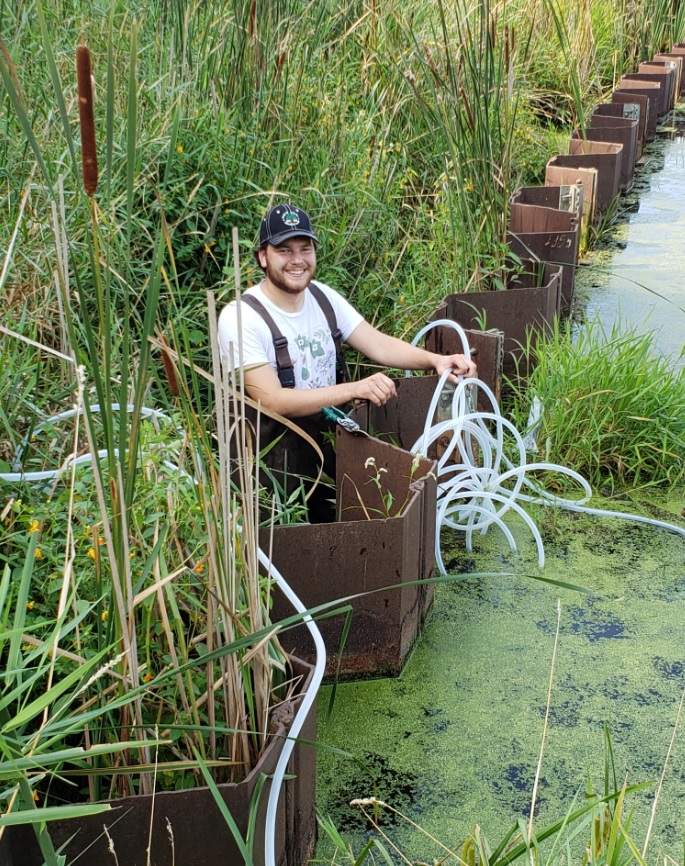
October, 2020
Sealed Bids were received by the VLAWMO until 2:00 p.m. (local time), Thursday, October 1, 2020, via QuestCDN. The bid opening was conducted via GoToMeeting, at which time bids were publicly opened and read aloud.
A lowest responsible bidder has been identified by the engineering team at SEH. A formal recommendation will be presented to the VLAWMO Board at the regular Board meeting on October 28, 2020. A contract will be set up upon authorization of the Board. Construction is weather dependent and scheduled for this coming winter.
The University of Minnesota research team continues to work on biochar testing and design. Early results on the biochar development process will be presented at the upcoming Water Resources Conference (Oct. 21 & 22, 2020).
November 16, 2020
Project Status
The VLAWMO Board approved the recommended bid from Sunram Construction, Inc., at the regular Board meeting on October 28, 2020. A conformed contract was signed and returned to the SEH engineering team by VLAWMO. Erosion control measures will be initiated by the contractor in the coming weeks, and selected homeowners near the construction area will be contacted for a photographic structural survey (basement/foundations) prior to sheetpile replacement. Construction is weather dependent and scheduled for this coming winter, upon approval by the engineers.
The University of Minnesota research team continues to work on biochar testing and design. Early results on the biochar development process were presented at the Water Resources Conference (Oct. 21 & 22, 2020). The team hoped to have a few fall storm events to measure treatment efficiency in the pilot biochar treatment cells that were located onsite. The early October freeze caused an early end to field-based biochar testing. The biochar boxes were loaded onto a truck and transported to the Natural Resources Research Institute (NRRI) where lab testing continues at this time.
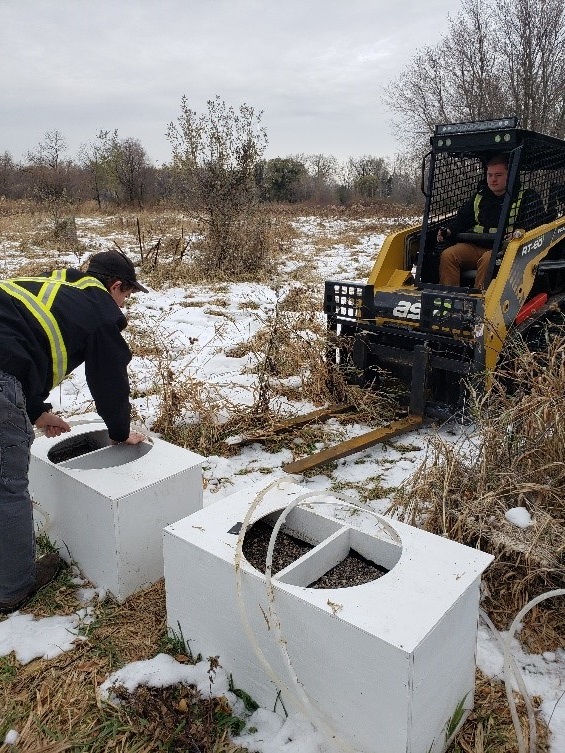
A forklift was required to load the pilot biochar treatment cells onto a truck en route to NRRI in Duluth for further testing.
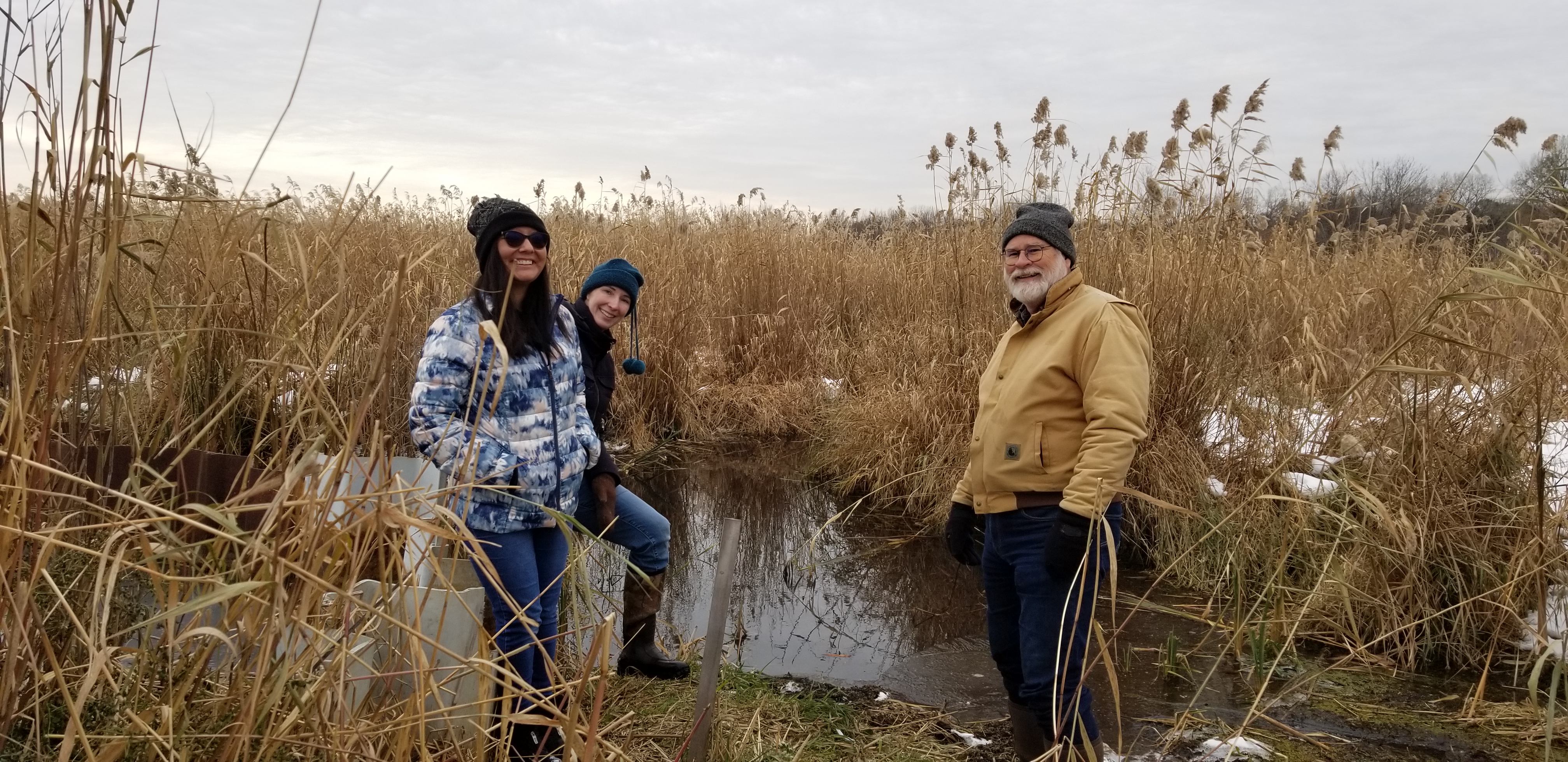
Members of the UMN biochar team and VLAWMO met onsite to discuss design ideas.
December 17, 2020
Project Status
The project is in final stages of preparation for construction in the coming weeks. Sunram Construction, Inc., contacted selected homeowners near the construction area for photographic structural surveys (basement/foundations) prior to sheetpile replacement. Sheetpile replacement may start as soon as the
week of Dec. 21, 2020. Meander construction preparation is also underway. The peat is not yet sufficiently frozen for earthwork to begin in that area.
